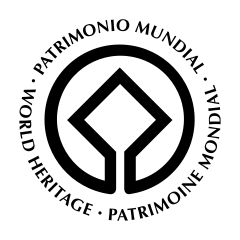List of World Heritage Sites in the Republic of Ireland
The United Nations Educational, Scientific and Cultural Organization (UNESCO) World Heritage Sites are places of importance to cultural or natural heritage as described in the UNESCO World Heritage Convention, established in 1972.[1] Republic of Ireland ratified the convention on 16 September 1991.[2]
As of 2018, Ireland has two sites on the list. Brú na Bóinne – Archaeological Ensemble of the Bend of the Boyne was added to the list in 1993 and Skellig Michael in 1996. Both are cultural sites, as determined by the organisation's selection criteria. In addition, there are seven sites on the tentative list (the official list of sites that may be considered for future submission).[3]
World Heritage Sites
UNESCO lists sites under ten criteria; each entry must meet at least one of the criteria. Criteria i through vi are cultural, whereas vii through x are natural.[4]
| Site | Image | Location (county) | Year listed | UNESCO data | Description |
|---|---|---|---|---|---|
| Brú na Bóinne – Archaeological Ensemble of the Bend of the Boyne | Meath | 1993 | 659; i, iii, iv (cultural) | The site is a complex of Neolithic chamber tombs, standing stones, henges and other prehistoric enclosures, some dating from as early as 35th century BC – 32nd century BC. The site predates the Egyptian pyramids and was built with sophistication and a knowledge of science and astronomy, which is most evident in the passage grave of Newgrange. The site is often referred to as the "Bend of the Boyne" and this is often (incorrectly) taken to be a translation of Brú na Bóinne (Palace of the Boyne).[5] | |
| Skellig Michael | .jpg) |
Kerry | 1996 | 757; iii, iv (cultural) | The Celtic monastery, which is situated almost at the summit of the 230-metre-high rock was probably founded in the 7th century. For 600 years the island was a centre of monastic life for Irish Christian monks. It is one of Europe's better known but least accessible monasteries. Since the extreme remoteness, it has until recently discouraged visitors, thus the site is exceptionally well preserved. The very spartan conditions inside the monastery illustrate the ascetic lifestyle practiced by early Irish Christians. The monks lived in stone 'beehive' huts (clocháns), perched above nearly vertical cliff walls.[6] |
Tentative list
The Ireland tentative list comprises sites which may be nominated for inscription over future years.[7]
- The Burren (2010)
- The Historic City of Dublin (2010)
- The Céide Fields and North West Mayo Boglands (2010)
- Western Stone Forts of Ireland (2010)
- The Monastic City of Clonmacnoise and its Cultural Landscape (2010)
- Early Medieval Monastic Sites of Ireland (2010)
- The Royal Sites of Ireland: Cashel, Dún Ailinne, Hill of Uisneach, Rathcroghan Complex, and Tara Complex (2010)
References
- "UNESCO World Heritage Centre – The World Heritage Convention". UNESCO World Heritage Centre. Archived from the original on 27 August 2016. Retrieved 25 October 2015.
- https://whc.unesco.org/en/statesparties/ie
- https://whc.unesco.org/en/statesparties/ie
- "UNESCO World Heritage Centre – The Criteria for Selection". UNESCO World Heritage Centre. Retrieved 17 August 2018.
- https://whc.unesco.org/en/list/659
- https://whc.unesco.org/en/list/757
- "Tentative List – Ireland: Short Description of Properties" (PDF). 2010. Retrieved 19 January 2015.

